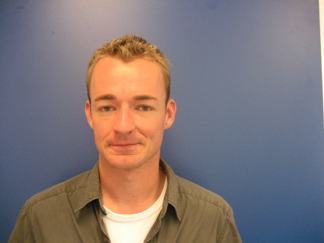Microfluidic free-flow electrophoresis for proteomics on a chip
Promotion date: 20 June 2008
Thesis advisor: Prof. dr. ir. Albert van den Berg
Assistant thesis advisor: Dr. ir. Richard Schasfoort
| This thesis describes the development of a new microfluidic chip for applications in proteomics analysis. This research was driven by the need for new, efficient analytical tools to help understanding autoimmune diseases, such as rheumatoid arthritis. This multidisciplinary research was carried out in cooperation with three Dutch universities: Twente, Utrecht and Nijmegen. The focus was on a new microfluidic free-flow electrophoresis chip, with the final goal of implementing a surface plasmon resonance detection region, for the separation and detection of specific proteins, e.g. anti-bodies. A free-flow electrophoresis chip with integrated ion-permeable membranes was developed, and very fast and high resolution separation results were demonstrated. Besides the successful fabrication of a more complex free-flow electrophoresis chip, with integrated surface plasmon resonance detection region, a strategy for proteomics-on-a-chip was developed, aiming at the separation of antigens that play a role in autoimmune diseases. |
What is the main advantage of a free-flow microchip in this case?
In proteomics you have to deal with a low concentration of anti-bodies, for detection. By using continuous seperations, such as in free-flow electrophoresis, you can increase the contact-time with appropriate sensors, to deliver more certain and exact results. In the first period of the project I changed from capillary electrophoresis separation to a free-flow electrophoresis chip design. Worldwide that is a rather new terrain, covered by only to a few expert people. It led to interesting results and publications in our field.
Can you mention some new insights?
We patented a chip design, which leads to detection using surface plasmon resonance. It is a rather complex design involving inlets of fluid, an electric field, several placings, six pumps et cetera. The chip itself is of the size of 20x20 centimeters, but the whole set-up is larger, not portable yet.
Also we fabricated a new type of membrane, of a hydro-gel, that functions as a fluid barrier, but performs as a good conductor as well. It is an essential part of new chip design techniques.
Which groups were of help at MESA+?
I was working in the group of professor Vino Subramaniam, biophysical engeering (BPE), the first years and later I changed tot BIOS, the lab-on-a-chip group of professor Albert van den Berg. Due to that, I got into contact with many scientists from different groups. That was very fruitful for my work.
The facilities here at MESA+ are world-class and there is great freedom in using them and, of course, the great help of technicians. Also local spin-off companies like Lionix, IBIS and Micronit, contributed to the project. They took over fabrication processes and Lionix took over the patent. The chances are really there, that in five until ten years, these kind of detection devices can be build on a large scale.
Do you have future plans already?
At first, I will stay some more months, and maybe write another publication. After five years, here at the UT, I would like to see something different. I apply at companies, as well at universities.
I like to work in a team of experts. When they show their expertise, I am willing to follow them without much of a discussion. But if I have the feeling I can do better or more quickly by myself, I like the freedom to draw and realise my own plans.
At MESA+ I never had the feeling people pushed me in one direction. I could follow my own ideas and direct my own research project. That sense of freedom I try to find in my new job as well.

